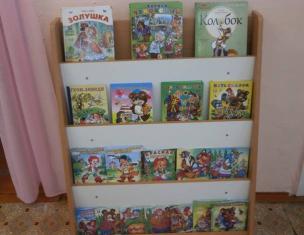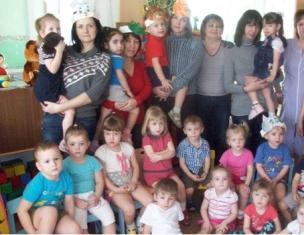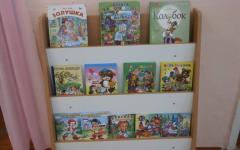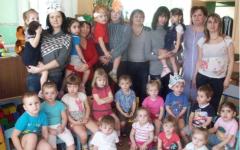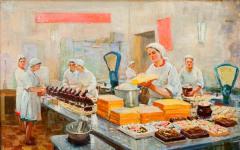Efimova Alla Ivanovna, Educator GDDOU №43 G. Kolpino St. Petersburg
Description: Environmental excursion in aimed at acquaintance with plants that can be found in the garden and in the garden. The work is addressed to the teachers of additional education of the environmental profile, educators and teachers of biology. The material is designed for children of senior preschool age.
Purpose: Maxue children with cultural plants.
Tasks:
- acquaintance with vegetable and garden plants;
- development of communicative abilities;
- Education of the careful attitude towards nature.
Educator: Guys, today we will make an excursion to the site of our household site. I ask you to carefully watch and remember what grows on the site. But first, I suggest to listen to the riddles and answer them.
- dressed up Alena,
In the sundress, your green,
Curl ruffles thick.
Will you know her? ... (cabbage)
- Black berries Lush bush -
They taste good! (Currant)
- he grows in the ground,
Returns to winter.
Head on the bow looks like.
If you just bother
Even a small slice -
It will smell very long. (Garlic)
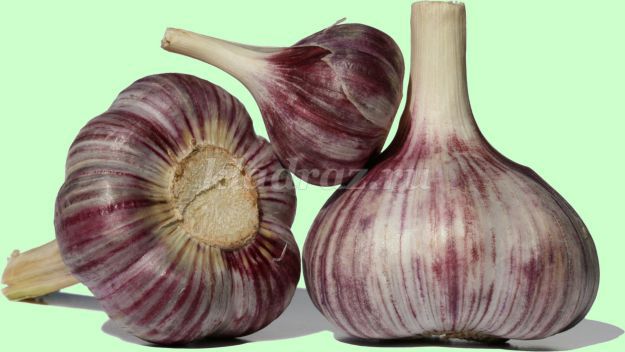
- Round, ruddy,
I'm a rastic on the branch.
Love me adults
And little kids. (Apple)
- He is never anyone,
Did not hurt in the world.
What are crying from him
And adults and children? (Onion)
- in the garden from the track,
It is worth the sun on the leg.
Only yellow rays,
He is not hot. (Sunflower)
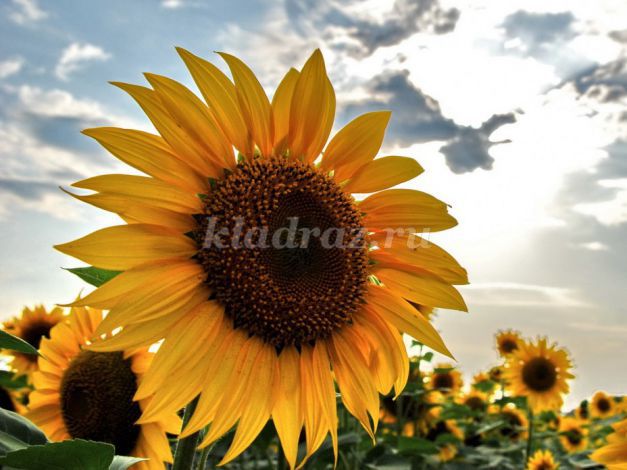
Educator: Did you notice any plants on the site?
Answers.
Educator: And tell me, do they differ from each other?
Answers.
Educator: Can we take these differences in your hands?
Answers.
Educator: I propose (call several names of children), bring us and show these differences.
Children Bring leaves of different plants.
Educator: Tell me what the difference between these leaves, what are they in shape, to the touch?
Answers.
Educator: And I suggest you a game: "Trees and leaves."
We fold all the collected leaflets into the bag and the guys with tied eyes are determined from which plant, which sheet.
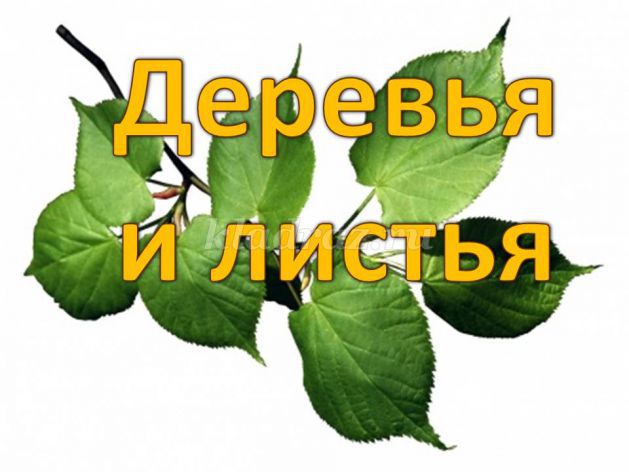
Educator: Tell us what can be prepared from these plants and where to add them?
Children tell.
Educator: We in the group with you a lot to read information about the benefits of plants, took poems. Maybe someone remembered.
Children read poems.
Child: In our garden
No radishes painted.
How wow, red, crugged,
Do not see what Mala.
Recka also succeeded,
Yellow Solnyh lit up.
But isn't bad,
In hundred clothes an old man?
Child: Look at the cucumber
Cucumber is such a sly!
Deftly dresses
Under the leaves hidden.
Divorce by hand
From the garden of the cucumber Torva.
Poland break,
Densely densely.
I myself are cucumbers,
Come - I grove!
Child: Along the path top top top -
I'm looking for dill in the garden.
He is green, he is fragrant,
And the dill fluffy!
Educator: I offer you a small quiz:
- Name fruit cultures?
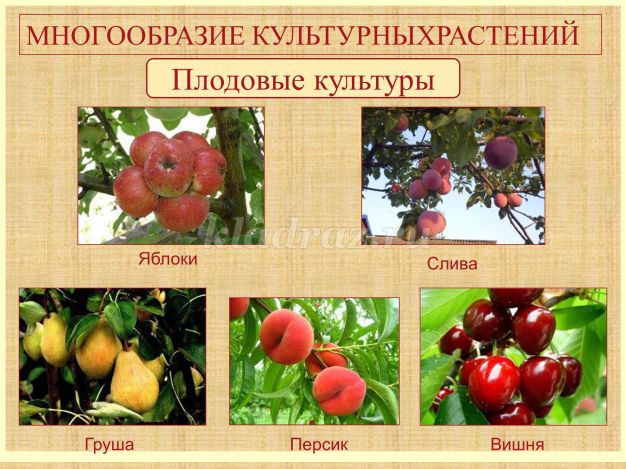
- Name the plants that we feed us?
- Do you know how many vegetables in a soup plate? What are the vegetables from which soup cook?
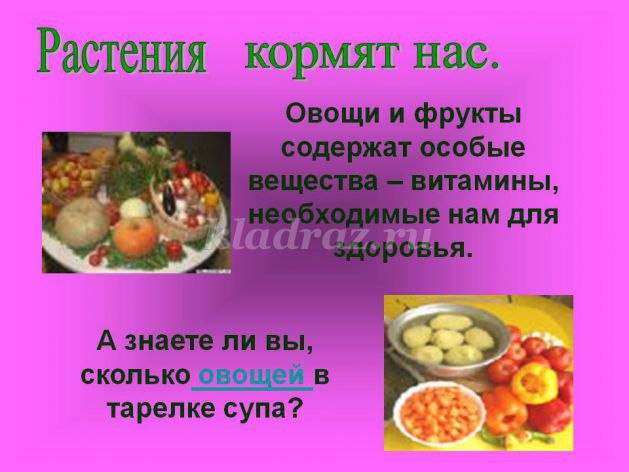
- Name grain crops? (Wheat, rice)
- What can be prepared from currant? (Juice, morse, syrup, etc.)
- What kind of medicinal plants do you know? (Calendula, dandelion, yarrow, etc.)
- Which groups are divided by plants: trees, shrubs, grassy.
- What are the plants called, which man himself landhes, cares for shoots, collects a harvest, uses in food? (Cultural)
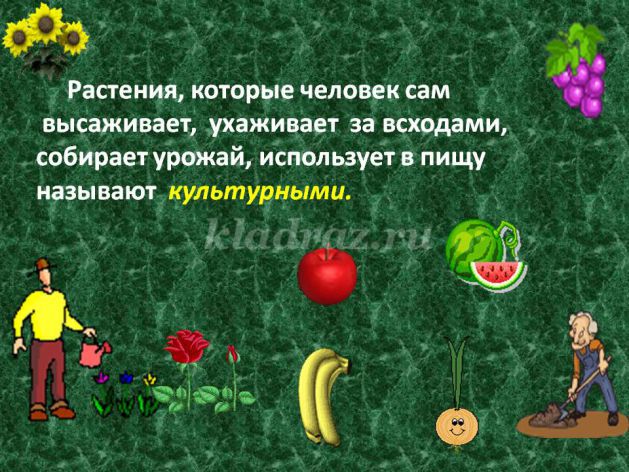
Educator: Let's interrupt on a small pause, or rather fizminutka.
Children perform movement on the appearance of the teacher.
Fizminutka: compote.
We will boil compote,
Fruit need a lot. Here.
We will crumble apples
We will cut a pear.
I wash the lemon juice,
Drain put both sand.
Cook, cook we compote,
Honest people treats.
Educator: Listen to the poem and name, or rather correct the names of vegetables.
Showed a gardener
We are such a garden.
Where in beds, snowy thick.
Courmes grew up
Spring grew,
Rediskliga, Cheslluk and dupus.
Celecock session,
And Morkofel dose,
He began to crumble asparagus.
N. Konchalovskaya.
Children call the familiar vegetables.
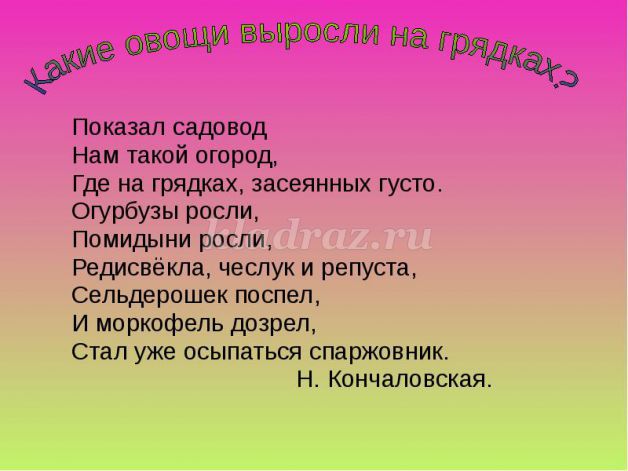
Educator: Guys, I want to invite you to play another game. I call you a color, and you must pick it up to it; For example: red - currants, tomato, radish, etc.
Game: "pick up the object to color."
Educator: Next game: "Find out and name."
I have a basket in my hands, I will get fruit or plants, and you have to tell everything about him that you know. Name the place where it grows (swamp, meadow, ravine).
For example, I show chamomile (flower), collected in summer; Onions (collected in summer, grows on the garden).
Educator: Guys, did you like our excursion?
What did you like best?
What conclusion can be done?


